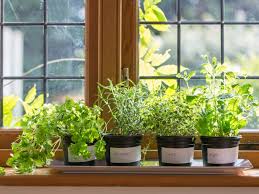DIY Indoor Herb Garden for Beginners: A Step-by-Step Guide
Growing your own herbs indoors is a rewarding and cost-effective way to add fresh flavors to your meals. Whether you live in an apartment or simply want fresh herbs year-round, a DIY indoor herb garden is an excellent solution. This beginner-friendly guide will walk you through everything you need to know to start your own thriving indoor herb garden.
Why Start an Indoor Herb Garden?
Indoor herb gardens offer several benefits:
- Fresh herbs at your fingertips – No more wilted store-bought herbs.
- Saves money – Grow your own instead of buying expensive packaged herbs.
- Improves air quality – Plants naturally filter indoor air.
- Enhances home décor – A green, vibrant addition to any kitchen or living space.
Best Herbs for Indoor Gardening
Not all herbs thrive indoors, but these beginner-friendly options do well in containers:
- Basil – Loves warmth and sunlight.
- Parsley – Hardy and slow-growing.
- Mint – Grows vigorously (best in its own pot).
- Thyme – Drought-tolerant and low-maintenance.
- Chives – Easy to grow and regrows after trimming.
- Oregano – Prefers bright light but adapts well indoors.
- Cilantro – Fast-growing but requires frequent harvesting.
Materials You’ll Need
To get started, gather these basic supplies:
- Containers with drainage holes (clay pots, plastic pots, or mason jars)
- High-quality potting mix (avoid garden soil)
- Herb seeds or starter plants
- Watering can or spray bottle
- Sunny windowsill or grow lights
- Small trowel or spoon (for planting)
Step-by-Step Setup Guide
1. Choose the Right Location
Most herbs need 6-8 hours of sunlight daily. A south-facing window is ideal. If natural light is limited, consider LED grow lights (affordable and energy-efficient).
2. Select the Right Containers
Ensure pots have drainage holes to prevent root rot. If using mason jars, add pebbles at the bottom for drainage.
3. Plant the Herbs
- Fill containers with potting mix, leaving an inch at the top.
- Plant seeds according to packet instructions or transplant small herb plants.
- Lightly water after planting.
4. Water Properly
Overwatering is a common mistake. Check soil moisture by sticking your finger 1 inch deep—water only if dry. Herbs like thyme and oregano prefer drier soil, while basil and parsley like consistent moisture.
5. Maintain Your Garden
- Rotate pots weekly for even sunlight exposure.
- Trim regularly to encourage bushier growth.
- Fertilize lightly every 4-6 weeks with organic fertilizer.
Common Mistakes to Avoid
- Overwatering – Leads to root rot.
- Insufficient light – Causes leggy, weak plants.
- Poor drainage – Stagnant water kills herbs.
- Crowding plants – Give each herb enough space to grow.
Harvesting Your Herbs
- Snip leaves as needed, but avoid removing more than ⅓ of the plant at once.
- Morning harvests yield the best flavor.
- Regular pruning promotes new growth.
Final Thoughts
Starting a DIY indoor herb garden is simple, even for beginners. With the right herbs, proper light, and minimal care, you can enjoy fresh, homegrown flavors all year. Whether you’re cooking, garnishing, or simply enjoying the greenery, an indoor herb garden is a small but satisfying project.
Ready to begin? Pick your favorite herbs and start planting today!
